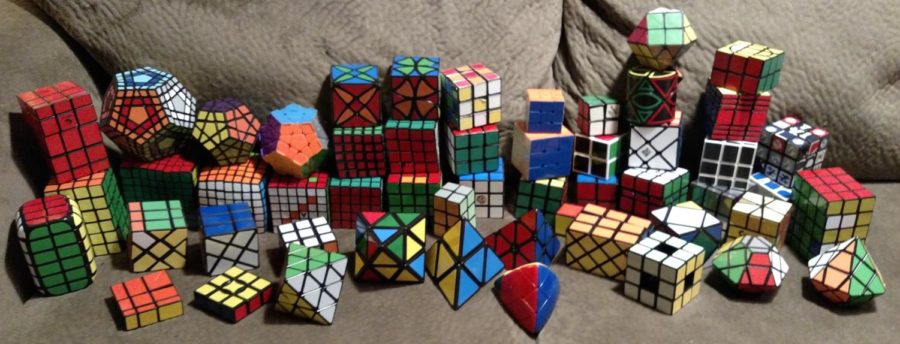Rubik’s Cube Talent Leads to Mindful Approach to Life
October 14, 2018
In 30 seconds, a young adult walks about half of a football field. In accordance to America’s averages, in that time the same young adult also washes his hands five times or sings happy birthday three times. In half that, Michael Arndt can solve the popular three by three twisty puzzle; more commonly known as the Rubik’s Cube.
Back in the eighth grade, he is ecstatic by being able to finish it within the waking hours. Many hours of effort and repetition are put in up until senior year.
Currently he can solve it in exactly 16.67 seconds.
While solving the puzzle dozens of times a day may sound over the top to most, his efficiency is the product of many hours of memorization and dexterity training.
Michael pulls out a few worn and creased papers from his backpack — each with long lines of small letters and numbers.
“These are my bible.”
The aforementioned letters and numbers each stand for a side of the cube being spun in a specific direction and sequence. Each of these “algorithms,” as he calls them, are to be memorized and executed in order to solve a cube.
For Michael, solving cubes is a form of meditation. In the short amounts of time it will take him, nothing else runs through his mind. Solving a cube is the “one form of setting goals” that he enjoys.
To anyone looking to start, Michael warns: start slow.
“Like a lot of things in life, start slow and steady before trying to work your way up.”
In his case, he has been practicing for almost four years now on and off. When approaching any new skill, one should always keep an open mind and accept the many inevitable failures that will be endured along the learning process.


